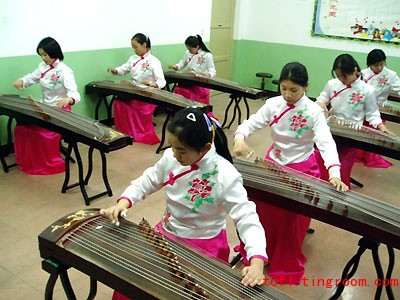Guzheng originated during the Warring Period more than 2,500 years ago in China. The earliest known versions were constructed with a bamboo frame and used silk strings. Its scale was pentatonic, using the notes DO, RE, MI, SO, and LA with a major note for each of its five strings. Because Guzheng was developed in a region called ‘Qin Guo', its name became known as the ‘Qin zheng'.
Guzheng remained popular through the late Qing Dynasty ( 1644 A .D. - 1911 A .D.), where contemporary Guzheng musicians began the first attempts to formalize Guzheng music by compiling and arranging both classical and popular works such as ‘ High Mountain and Flowing Water' and ‘Evening Song of the Fisherman.' In 1948, the renowned musician Cao Zheng established the first university level Guzheng program in China. The old silk strings were replaced with nylon strings, which are still being used today.

- Development
Guzheng became very popular in the imperial court and among the common people. Historical records from ancient books and scholarly writings give vivid accounts of the instrument and its music. Hou Jin, a scholar of the Eastern Han Period (25 A.D. - 220 A.D.) wrote that Guzheng's sound touches the Heavens above and the Gods and spirits below.
By the Tang Dynasty (618 A.D. - 907 A.D.), the number of strings had increased from five to thirteen, and the bamboo had been replaced with wu-tong or paulownia wood for the frame of the instrument. In addition, many new forms of Guzheng appeared through cultural exchanges with Japan, Korea, Mongolia, Vietnam and many other Asian countries.




